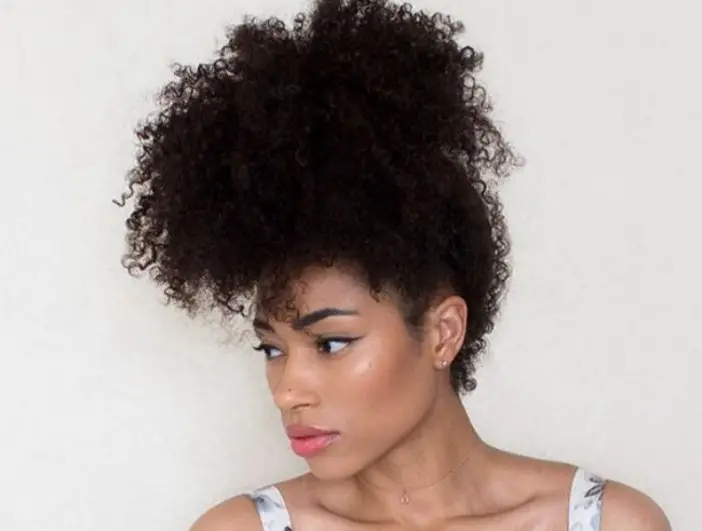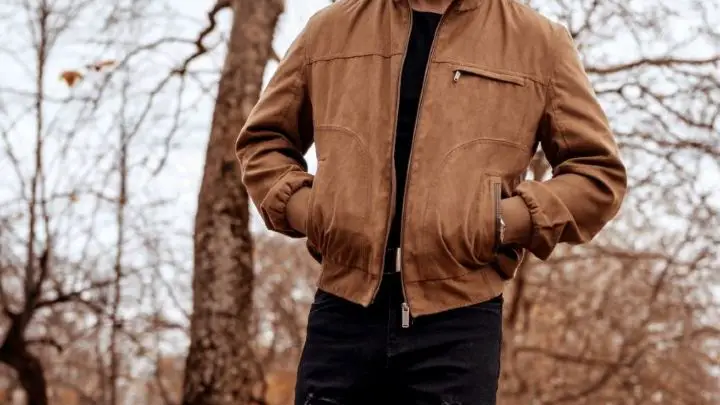Keeping natural hair, especially the type 4 hairs, is a tasking yet fulfilling hair journey. You keep wondering what you have to do to keep it healthy, shining, nurtured, and growing. For those who have tried everything and still not don’t get their desired result. Maybe it’s time you tried steaming your natural hair.
Steaming your natural hair can be that added treatment that you did not know you needed in your hair care routine. Don’t undermine the power of steaming because it is another way to moisturize the hair.
For those who experience hair dullness and dryness whether it is due to the weather or because they have low porosity hair, this is the article for you.
We are going to find out what hair steaming is, types of steaming techniques, why you should stream your natural hair, and how you should steam your natural hair.
What is Hair Steaming?
Hair steaming is using moist heat to hydrate dull and dry hair under a controlled warmer, i.e. a covered cap. It is the process of transforming water into steam then releasing it into the controlled space.
The moist heat penetrates deep into your hair, then lifts the hair cuticles and raises them, thus allowing the shaft to be opened which improves better hair product absorption. With steaming, it is easy for our natural hair to take in moisture and aid the strengthening of our hair strands.
Additionally, hair steaming helps in blood circulation because the scalp is opened up and blood flows naturally, allowing for the hair growth phase to happen.
As natural hair keepers, we need to steam our hair regularly because of the density of our hair and also our curls. For those with thicker and drier hair that needs lots of moisture to be maintained, steaming your natural hair is the best solution to add to your hair routine.
Types of Steaming Techniques

There are various techniques to use when you want to steam your natural hair. You can opt to have a hairdresser do it for you or you can take up the tools and do it yourself. It all depends on what you are comfortable with.
Hair steaming can be done using a steamer or using your everyday hair tools. The process of using homemade tools requires you to have a form of conditioning cream or oil, a plastic cap, and a hot wet towel. How this will be used will be discussed later, so keep reading.
A steamer on the other hand is a device used for steaming hair. It transforms water into hot vapor and circulates it around the controlled space. Different types of steamers come in different shapes and sizes but they all perform the same function. They are:
Professional Adjustable Steamer
It is a standing steamer mostly used professionally in beauty salons. It is an electrical mid-length height pillar with a dome attached at the top. The dome is where the hair is placed under, just like a dryer.
The pillar is adjustable to get the dome to sit right on top of whoever is using it. It is easy to use, as it can be timed so over-steaming is avoided.
Tabletop Steamer
Tabletop steamers are just like the professional steamer, only smaller. They are for professional and home use. All you have to do is attach or place it on a table and plug in the adaptor to use. Tabletop steamers usually have a water reservoir where water is heated then turned to vapor.
Handheld Steamer
This is more portable to use and doesn’t take space. It is small in size with prongs that are like mini combs. When using, you add distilled water to the reservoir and steam your hair in sections with the comb edge.
Handheld steamers are easy to use and lightweight, making them the ideal steamer to take anywhere with you. A popular example is a Q-Redew steamer.
Hair Steamer Cap
The hair steamer cap is mostly for convenience and overall feel while steaming. It is an electrical plastic cap covered with tin foil underneath that would help retain heat. It is very easy to use and the least expensive.
The only drawback is that it does not deeply steam the hair like the others.
SEE: Everything You Need to Know About Thinning Hair
Benefits of Steaming Your Natural Hair

Steaming your natural hair should be a straightforward pick when it comes to keeping your hair healthy. It has many benefits for natural hair maintenance and growth. Some of the benefits are:
1. It helps with product absorption
During steaming, your natural hair cuticles are lifted, allowing your pores to be opened. When the pores are opened, it is easy for hair products to be absorbed into the shaft. This is good especially for hair with low porosity.
2. Improves hair elasticity
The hair’s ability to expand and shrink is greatly improved by steaming. When steaming, moisture rests on the hair strands, protecting them and also making them firm, strong, and easy to bend without breaking.
3. Improves health of scalp
Irritation to the scalp is cleared when you steam your natural hair. Steaming also clears the scalp of dandruff and dust residue residing in hair.
4. Stimulates hair growth
Steaming allows for blood circulation which reactively starts the growth phase of the hair cycle. When blood is circulating freely, hair growth is possible. Therefore, steaming stimulates natural hair growth.
5. Strengthens the hair
Steaming your hair immensely strengthens your hair strands because of the moisturizing effect. Since it helps the absorption of products, they can work effectively and keep the hair strong and healthy.
6. Cleans the hair
One of the benefits of steaming is that it keeps your hair clean. The hot vapor cleanses the hair of product residues that are trapped in the hair. Other contaminants like smoke and dust are also vaporized when steaming.
7. Moisturizes the hair
Steaming keeps your hair moist and hydrated. It also helps retain nutrients, that way your hair won’t feel dull or dry.
SEE: Effective Hair Steaming Tips For Natural Hair
How You Should Steam Your Hair

Steaming your natural hair is a fairly simple process that works with precision. As stated earlier you can either use a steamer to steam your hair or the homemade method. The process for steaming for both will be highlighted below.
Instructions for using a steamer
- Wash your hair cleanly with shampoo.
- Apply conditioner or oil on wet hair.
- Wear a plastic cap (use plastic wrap if you wish). Make sure it covers hair completely and holds them in place.
- Sit under the dome.
- Set your time and start steaming.
For handheld steamer, the process is different.
- Wet your hair
- Part your wet hair into sections
- Add your conditioner or oil
- Set your handheld steamer
- Apply steamer to the sections one at a time
Homemade Steaming
For your homemade steaming, you’ll need a conditioner, plastic cap, and a wet towel.
- Wash your hair with shampoo.
- Apply your conditioner or any other hair treatment you use.
- Put on your plastic cap or tie a plastic wrap around your head.
- Wrap a damp hot towel around your head and let it sit for 20-30 minutes.
- Unwrap the towel and comb through your hair.
How Often Should You Steam Your Hair?
This solely depends on the nature of your hair. If you have healthy natural hair once a month is best for steaming your hair. When you steam your hair too often, it could become over-moist.
Whereas if you have perched hair, you have to steam your hair once a week. Your hair needs moisture and elasticity to keep hair strong and not dull and dry. Until you start seeing changes in your natural hair keep it once a week for the best result.
SEE: Try Hair Masks to Improve Your Hair’s Strenght
Hair Steaming Dos and Don’ts

To effectively reap the benefits of steaming your natural hair, it would be recommended you follow these simple dos and don’ts.
Dos
- Do steam at least once a week if you have a perched hair.
- Do have a dry washcloth to take in the falling hot water. This way you prevent your discomfort.
- Do always treat your hair before steaming. It is a must to shampoo your hair, then add your treatment before you steam.
- Do use a plastic cap or wrap for steaming to effectively work.
Don’ts
- Don’t leave your hair down while steaming. Always have it wrapped.
- Don’t over-steam. No matter how perched your hair, 30 minutes should be the maximum time.
- Don’t forget your nape. Your baby hair needs attention too.
- Don’t steam before shampoo. Always make sure to steam your hair after shampooing and adding treatment.
Frequently Asked Questions

Will steaming damage my hair?
No, it wouldn’t. Steaming does not damage your hair if done right. If you do not steam well with a steamer, it might fall out. However, that is rarely the case with using a steamer.
Can you steam your hair with egg?
Yes, you can. You can steam with eggs to boost your hair volume and moisturize your hair. Furthermore, a steamer with egg used as conditioner would seal in moisture and enrich your hair strands with needed protein.
Do you need oils to steam hair?
Yes, you do. You need oils to moisturize and shine you r hair while it steams. The steam carries the oil deep into your cuticles, bringing your hair back to life.
Summary
Natural hair is beautiful to grow if you are following the right steps and ways. With the different types of hair textures, some need more attention than others. Steaming will go a long way for your natural hair if you have low porosity or very dry strands.
It will keep your hair moisturized and clean. It will also strengthen your hair and stimulate its growth. Steaming is also easy and you can either use a steamer or do homemade steaming. The choice is yours. So go ahead and try it now.
Thanks for reading.
Liked this article? You can read more on Africana Fashion if you want relevant hair care articles.







